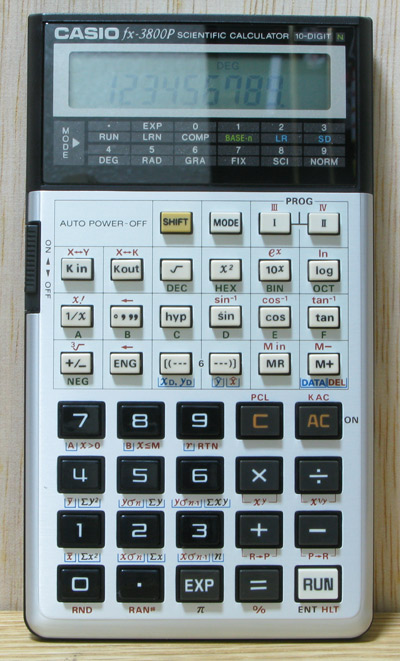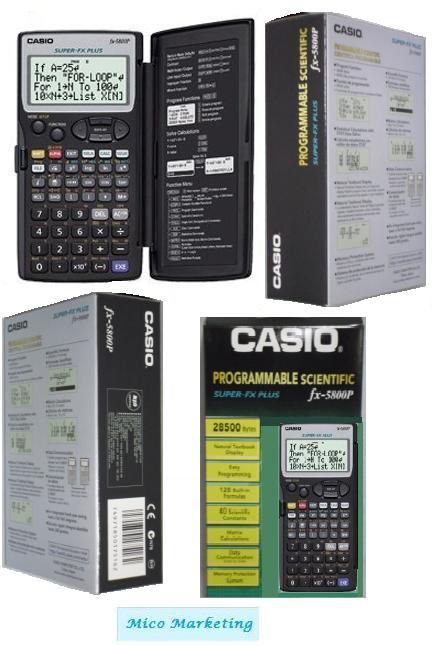

It claims 15 digits for internal calculations, 10 for display mantissa, a precision (meaning accuracy?) of 1 ulp for those and cumulative errors. Base-N mode is a pleasure, as in BIN you can see all the 32 signed/unsigned bits.

Statistics look nice, regression too, you can work straightforwardly with your table of data and move around it. The number of recorded calculations is not fixed, it appears to be limited by some specific memory constraint. All 4 cursor keys enable REPLAY, and allow for navigation/editing through current input and recent history. The speed is reasonable, input buffering doesn't seem to make it sluggish when entering long expressions. As different templates are used for proper and improper fractions there's no ambiguity, default mode is improper. In COMP mode, Natural Display mode works like a charm (you can choose between this "MathIO" or standard "LineIO"), but it has a problem with implied multiplication (syntax error) if just a number follows the fraction (put an x (*), sqrt or a parentheses and it works). All the features of the 5000F (formula and alphanumerics specially), 4500P/PA (FILE) and 5500L/LA are there, and those of the 115ES too except for unit conversions, in fact it's kind of a 115ES on steroids. There is no complex mode, it just works with complex numbers for arithmetic, ^2, ^3 and SQRT.

I don't understand very well why Ans is not primary as it has the nice feature of understanding the arithmetic minus key sign as a minus sign everywhere. You have the same maths keys of a 115ES, but now Ans and inverse are shifted. It's not that awkward after you get the hang of it. If you don't choose any of them, you get out of there via EXIT key, which also returns to the previous menu in case you're in a sub-menu. After you choose one mode, you can get the menu of available functions for that mode that are not in the layout via FUNCTION key. It is strongly modal: MODE key shows/hides the mode menu, so you can pick one. It's a fairly handsome closed calculator. When closed it shows you just a silver small CASIO label. Faceplate and cover are black, the rest is dark grey, and the texture of it all is matte. Cover is made from ABS, (as is everything else?) looks a bit fragile but not flimsy at all, it closes nicely. The calculator is well made, lighter than it looks, a bit tilted and a bit weight balanced towards the screen. It has a protective (I guess Polycarbonate, maybe PMMA) protruding window, moderately thick, ~1mm. LCD is quite good, a bit greenish but very readable. Pixels are on the big side, so numbers look big, pretty nice overall. Keep in mind that this is not an expensive calculator. It is "soft" (but not too/that much), yet provides a reasonable haptic feedback with an audible tap, no registering problems so far. The keyboard is decent, much better than the recent Casio scientifics, although it's plastic (ABS?) over membrane. People interested already know about its features (scientific, programmable, non graphing), here is the User's Guide. I've just received one of these brand new coming from Korea, and I want to share a few first impressions with you.


 0 kommentar(er)
0 kommentar(er)
